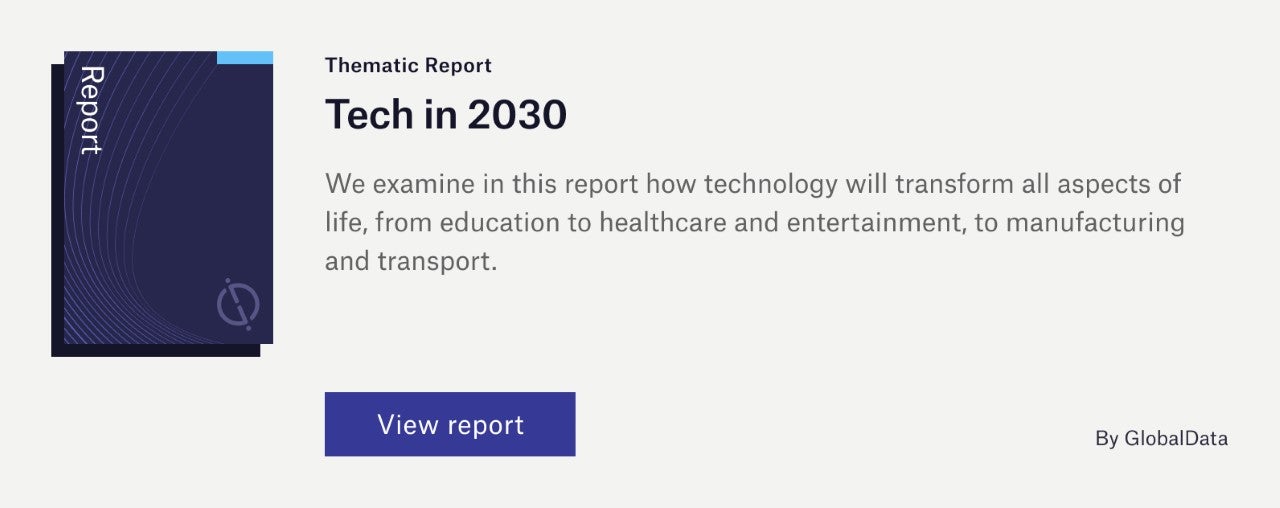The future of the medical industry will be shaped by a range of disruptive themes, with robotics being one of the themes that will have a significant impact on medical companies. A detailed analysis of the theme, insights into the leading companies, and their thematic and valuation scorecards are included in GlobalData’s thematic research report,Robotics in Medical Devices, 2021 Update – Thematic Research. Buy the report here.
Medical robotics is a fast-growing field in the medical device industry with the surgical robotics segment leading the market. According to GlobalData forecasts, the total surgical robotics market will have grown at a strong compound annual growth rate (CAGR) of 8.5% during 2020-2030, bolstered by the coming marriage of artificial intelligence (AI) and robotics within medical devices.
The surgical robotics market can be segmented into capital equipment and consumable accessories. The robotic surgical system accessories occupy the majority of the market, driven by the demands of high-volume procedures. Based on procedure types, the surgical robotics market can be broadly divided into three primary sub-segments: general surgery robotics, orthopaedic robotics, and neurosurgery robotics. The number of surgeries performed using surgical robotics is expected to grow at a CAGR of 10.5% in the US from 2020 to 2030. Covid-19 has had a negative impact on the number of robotic surgical procedures due to the cancellation of elective surgeries in Q2 2020 through 2022, however, the negative impact of Covid-19 on robotic surgery was offset by organic growth.
However, not all companies are equal when it comes to their capabilities and investments in the key themes that matter most to their industry. Understanding how companies are positioned and ranked in the most important themes can be a key leading indicator of their future earnings potential and relative competitive position.
According to GlobalData’s thematic research report, Robotics in Medical Devices, leading adopters include: Intuitive Surgical, Medtronic, Cyberdyne, Globus, HollySys, iRobot, Johnson & Johnson, Omron, ReWalk Robotics, and Stryker.
Insights from several of the top ranked companies
Johnson & Johnson
Johnson & Johnson announced details for its new robotic surgical system, Ottava, in 2020 after acquiring Auris Health and its Monarch system for bronchoscopic procedures in 2019. Throughout 2021, Johnson & Johnson worked on validating the Ottava system, and planned to begin clinical trials in 2022. The company has indicated that Ottava will be able to perform a variety of procedures that overlap with the da Vinci system. The company unit DePuy Synthes announced that it received FDA 510(k) clearance for the VELYS system in 2021. The system is expected to integrate into both large and compact operating rooms, adapting to a surgeon’s workflow and helping execute accurate bony cuts for total knee replacement procedures.
Stryker is a leader in implants and implant procedures for hip and knee replacements. The number of people requiring knee and hip replacements is rising rapidly and will not slow in the foreseeable future, especially with rapid urbanisation in China, India, and Africa. In 2018, Stryker acquired K2M, a leader in complex spine and minimally invasive solutions, for $1.4bn. According to Stryker, this deal complemented its leadership in the spine and neurotechnology markets. Stryker developed Mako, a robotic arm that provides surgeons with assistance during procedures. Covid-19 impacted the company’s business as elective procedures were postponed so that healthcare systems worldwide could focus on treating patients infected by the virus. However, Stryker is rebounding as elective procedures return in countries that have managed to control the pandemic with vaccines.
Omron makes broad-based electronic components and systems for factory automation and healthcare. Like Keyence and Nabtesco, Omron is a key supplier to the robotics industry. It is expected to benefit from China’s drive to automate its manufacturing base as this has been a major initiative for the country over the past several years. The company has branched out with an autonomous intelligent vehicle (AIV) for moving cargo and materials around factories and warehouses. Its main 2021 launch was in the healthcare field. Omron developed its first single-lead electrocardiogram and blood pressure monitor for home use.
To further understand the key themes and technologies disrupting the medical industry, access GlobalData’s latest thematic research report on Robotics in Medical Devices.
- Abbott
- Philips
- Apple
- Roche
- Hill-Rom
- DexCom
- Alphabet
- Quest Diagnostics
- Agilent Tech
- Qiagen
- 3M
- Nihon Kohden
- Danaher
- Becton Dickinson
- Illumina
- Teleflex
- Garmin
- Smith & Nephew
- Thermo Fisher Scientific
- Biotronik
- Getinge
- Edwards Lifesciences
- Coloplast
- Terumo
- MicroPort
Data Insights
From

The gold standard of business intelligence.
Blending expert knowledge with cutting-edge technology, GlobalData’s unrivalled proprietary data will enable you to decode what’s happening in your market. You can make better informed decisions and gain a future-proof advantage over your competitors.
Frequently asked questions
-
1. How are Medical Devices companies using robotics?
Medical Devices companies are using robotics to improve the standard of care and help humans perform tasks they may not have been able to do. The two main types of medical robots are surgical robots and care robots. Other types of robots could be used in a medical context, including exoskeletons. Cleaning and maintenance robots are used in hospitals and care homes, but are not explicitly designed for medical use.
-
2. How does robotics impact the Medical Devices industry?
Robotics is having a significant impact on the Medical Devices industry. The use of cloud computing and AI enables robots to collaborate and access huge amounts of data uninterruptedly. Automation is key to improving productivity. As countries and companies recover from the pandemic, interest in robotics will increase. Robust growth is expected in medical robotics in the next decade.
-
3. Who are the top robotics adopters in Medical Devices?
The top robotics adopters in Medical Devices are Intuitive Surgical, Medtronic, Johnson & Johnson, Stryker, Zimmer Biomet, and Cyberdyne. These companies are leading the way in the development and adoption of surgical robots and care robots.
-
4. Who are the leading providers of robotics in the Medical Devices industry?
The leading providers of robotics in the Medical Devices industry include ABB, Cognex, Microsoft, Rockwell Automation, Google, Amazon, Amazon, Preferred Networks, FANUC, C2RO, Midea (KUKA), and Cisco.
-
5. How does investment in robotics help Medical Devices companies?
Investment in robotics can lead to improved productivity and efficiency, as well as better patient outcomes.
-
6. What are the challenges with adoption of robotics in Medical Devices?
The challenges with adoption of robotics in Foodservice include high initial costs, lack of skilled labor to operate and maintain the robots, and concerns about the impact on employment. There are also regulatory challenges.
-
7. What is the projected market size of robotics in Medical Devices?
According to GlobalData forecasts, the total surgical robotics market will have grown at a strong compound annual growth rate (CAGR) of 8.5% from 2020 to 2030, bolstered by the coming marriage of artificial intelligence (AI) and robotics within medical devices.
-
8. Who are the leading specialist robotics vendors in Medical Devices?
The leading specialist robotics vendors in Medical Devices include Harmonic Drive, Omron, TE Connectivity, Nabtesco, Keyence, and Honeywell. These companies provide precision mechanical parts and semiconductors that are essential components of medical robots.
-
9. What are the components of the robotics value chain?
The components of the robotics value chain include robot manufacturing, hardware components (such as precision mechanical parts and semiconductors), software components (such as robotic intelligence and cloud robotics), and robotics as a service.









